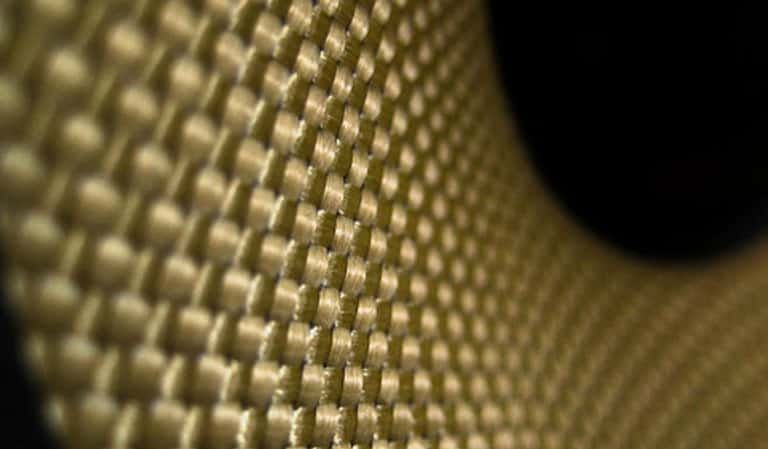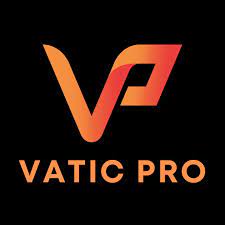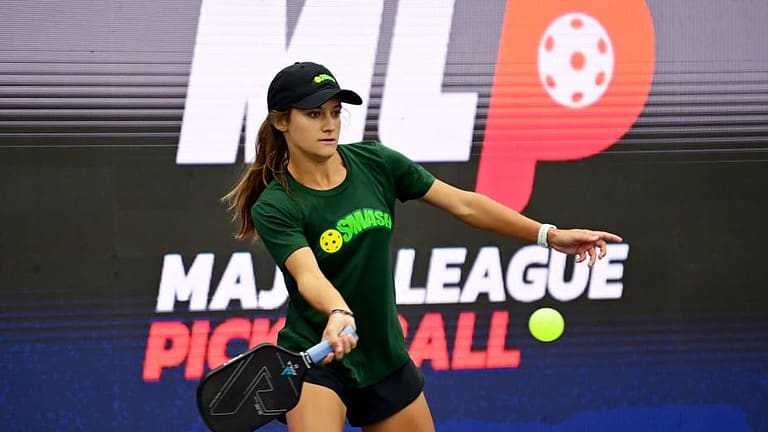2 Best Line Call Systems for Pickleball Features & Pricing
In today’s world, technology is revolutionizing the way sports are played and enjoyed. One such sport that has benefited from technological advancements is pickleball.
In particular, line call systems have brought about a significant shift in how points are scored, eliminating human error and reducing disputes on the court.
This blog post will delve into two top-line call systems currently used in pickleball – the Hawk-Eye line call systems and the In/Out 3.0 tennis line call device. The In/Out 3.0 is an amazing device that is affordable and tailored to rec play.
We’ll walk through their features, compare their performance, cost, and utility, and guide you in choosing the best system for your pickleball courts.
Why Are Line Call Systems Needed?
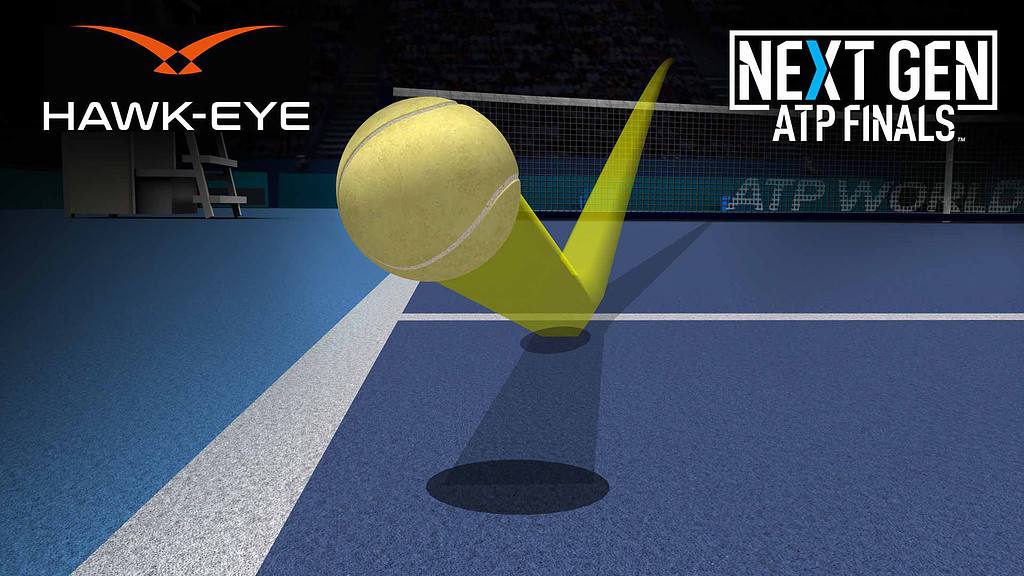
The Importance of Accuracy in Pickleball
The game of pickleball, like any other competitive sport, demands precision and accuracy. The placement of shots, the speed of the ball, and the angles at which it is hit can all influence the outcome of a match.
But the accuracy of line calls is just as crucial, determining whether the ball is ‘in’ or ‘out.’ Incorrect line calls can disrupt the flow of the game, cause disputes, and even lead to unfair results. So maintaining accuracy in line calls is a major concern in professional pickleball matches.
How many times have we been playing, and there is a question of whether the ball is in or out? It happens in every single game.
An Overview of Line Call Systems
Line call systems are automated tools that help accurately determine whether a ball is in or out of play. They use advanced technologies like high-speed cameras and computer algorithms to track the ball’s trajectory and pinpoint its landing spot. The results are instantaneous, unbiased, and remarkably accurate, making these systems an increasingly popular choice for professional tournaments worldwide.
The Hawk-Eye System
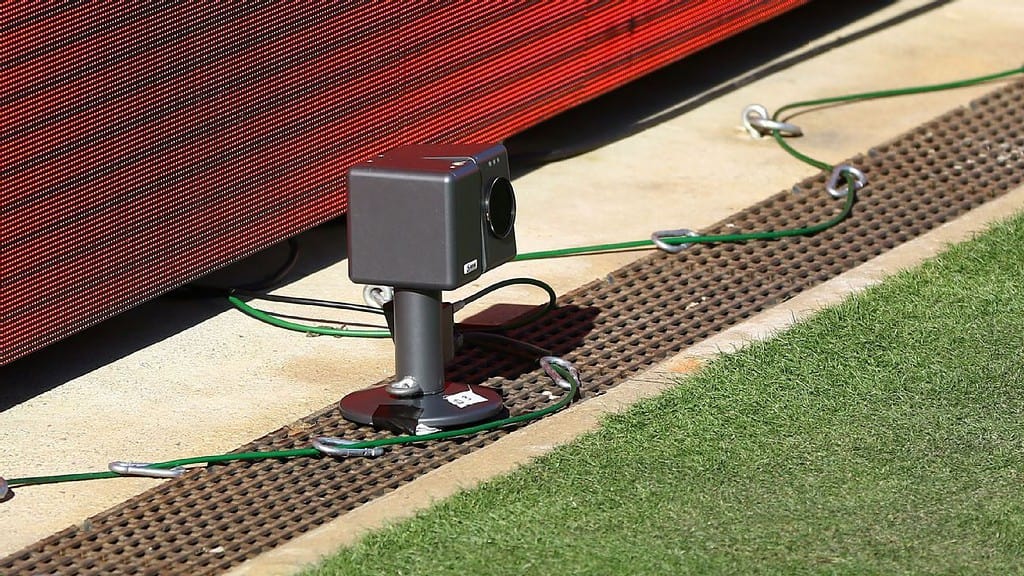
What is the Hawk-Eye System?
The Hawk-Eye system is a sophisticated line call system first introduced in tennis and is now adopted in various other sports.
This system is for major sports arenas or large venues that host major tournaments. You will not find these at your local courts or rec centers.
It uses multiple high-speed cameras positioned around the court to capture the movement and location of the ball from different angles. The images from these cameras are then processed in real-time to create a three-dimensional representation of the ball’s path.
The system makes automatic line calls and can detect even the minutest deviations, with a precision of up to 2.6mm.
Features of the Hawk-Eye System
– High-Speed Cameras: The Hawk-Eye line call systems uses multiple high-speed cameras positioned strategically around the court to track the ball’s movement. These cameras capture images at a rate of 600 frames per second, ensuring accurate and detailed analysis.
– Real-Time Processing: The captured images are processed in real-time using advanced computer algorithms. This allows for instant line calls, eliminating any delays or disruptions in the game.
– Three-Dimensional Representation: The processed data creates a three-dimensional representation of the ball’s path, enabling precise measurement of its trajectory and landing spot.
– Minutest Deviations: The Hawk-Eye line call systems have an impressive precision of up to 2.6mm, meaning they can detect even the smallest deviations in the ball’s path. This ensures highly accurate line calls.
Cost and Complexity of the Hawk-Eye System
While the Hawk-Eye line call systems offer exceptional accuracy, it comes with a substantial price tag. A single-court setup costs between $60,000 and $70,000, and the cost multiplies for bigger tournaments featuring multiple courts.
This can run into hundreds of thousands of dollars based on the type of sports venue is using it.
Furthermore, the system requires a technical crew to operate the high-speed cameras and manage the computer processing.
Despite these challenges, the Hawk-Eye system is widely accepted in professional sporting events due to its proven reliability and accuracy.
Benefits and Limitations of the Hawk-Eye System
The Hawk-Eye line call systems promise the best precision inline calls, improving the fairness and integrity of the game.
It also reduces disputes and disruptions during the match, contributing to smoother gameplay.
However, the system’s high cost and technical complexity make it less accessible for smaller tournaments and local clubs.
Moreover, the system’s effectiveness may be limited on clay courts where ball marks are visible, as seen in the French Open’s reluctance to adopt the technology.
The In/Out 3.0 Tennis Line Call Device
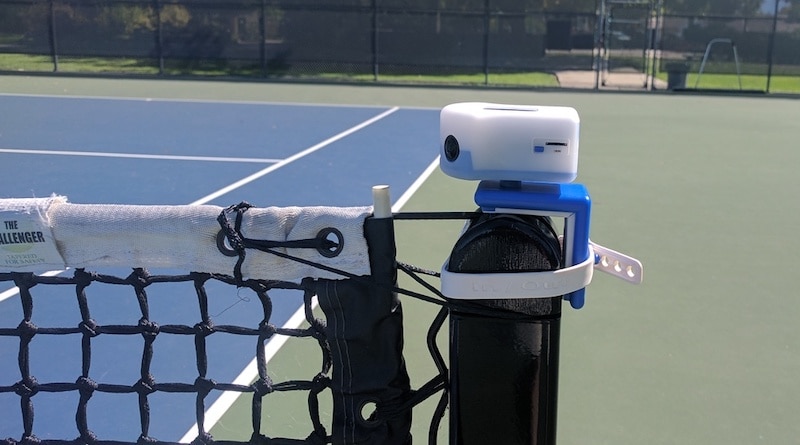
Introduction to the In/Out 3.0 Line Call Device
Not only is this very easy to use, but it is also affordable and can be installed on any court in a short period of time. It is used in some of the Leagues I play in, as well as Clinics at a large pickleball facility.
The In/Out 3.0 is a portable line call device designed to bring the benefits of automatic line calling to more players and venues.
It uses the same computer vision algorithms that power self-driving cars to detect the side of the line where the ball lands.
The device can be quickly attached to any tennis net post, providing real-time line calling during matches.
How the In/Out 3.0 Works
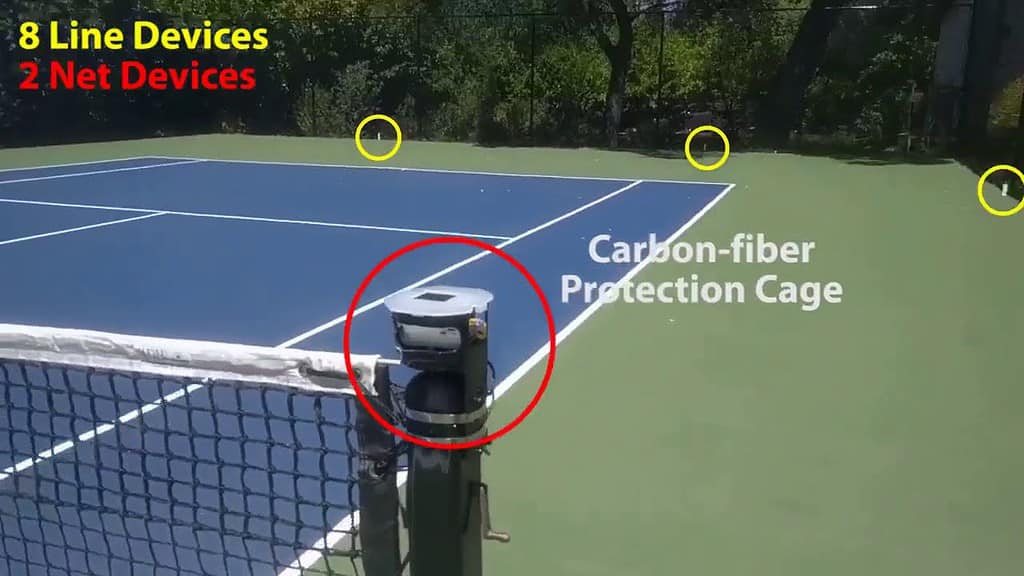
The In/Out 3.0 features two cameras that record both sides of the court in 1080p. It processes this data instantly to determine the exact position of the ball.
The device also includes functionalities for video replay and statistical analysis, such as shot placement by zone.
A recent upgrade added a third wide-angle camera for recording videos similar to official match broadcasts. The device is great for pickleball courts, tennis courts and other court sports like badminton and padel.
Features and Benefits of the In/Out 3.0
The In/Out 3.0 boasts several exciting features. Its improved accuracy (200% more than previous versions) minimizes errors inline calls.
The additional camera enhances video quality, offering a TV-like viewing experience. The device also provides real-time light and sound signals for line calls and offers extensive statistics for performance analysis.
It is also easy to install and use, as I have mentioned, making it a practical choice for practice matches and local tournaments.
Price and Recommendations for the In/Out 3.0
The In/Out 3.0 is priced at $275 for a single Net device, making it a more affordable alternative to the Hawk-Eye system–by orders of magnitude.
For official matches, the manufacturer recommends using two units for increased accuracy. Thanks to its user-friendly design and enhanced features, the In/Out 3.0 is an excellent investment for players that want to improve their game and ensure fair play.
Comparing the Hawk-Eye and In/Out 3.0
Differences in Cost and Setup
When comparing the Hawk-Eye system and the In/Out 3.0, the most significant difference lies in their cost. The Hawk-Eye system’s high price point and complex installation process make it suitable primarily for professional tournaments.
The In/Out 3.0 Line Call Device offers a more affordable and portable automatic line calling option than the Hawk-Eye system.
While it may not provide the same level of precision and reliability, it brings the benefits of instant line calls and additional functionalities to a wider range of players and venues.
However, potential limitations such as camera positioning and lighting conditions should be considered when using the device.
Differences in Accuracy
Both systems offer high accuracy in line calls, but they differ in their level of precision.
The Hawk-Eye system claims an accuracy of up to 2.6mm (1/10 of an inch), while the In/Out 3.0 has a margin of error of up to 20-30mm (3/4 of an inch to an inch).
While this difference might not significantly impact amateur play, it could influence the outcome in high-stakes professional matches. This can be an issue in League play for sure.
Differences in Utility for Different Courts
The Hawk-Eye system works well on all court surfaces but is less useful on clay courts where the ball leaves a visible mark.
The In/Out 3.0, being a portable and flexible device, can be used on any court, including those for pickleball and badminton. Therefore, the choice between the two may also depend on the type of court and sport.
Conclusion
Recap of the Benefits of Using Line Call Systems
Line call systems like the Hawk-Eye system and the In/Out 3.0 bring precision, fairness, and efficiency to the game of pickleball.
By eliminating human error in line calls, these systems ensure that every point is scored accurately. They also provide valuable data for performance analysis and player improvement.
While these systems require an investment, their contribution to enhancing the game experience makes them a worthwhile addition to any competitive pickleball court.
Final Thoughts on Choosing a Line Call System for Pickleball Courts
In choosing a line call system, consider your specific needs and resources. If you’re organizing a professional tournament where precision is paramount and budget is not a limiting factor, the Hawk-Eye system could be the ideal choice.
If you’re a player looking to improve your game or a local club seeking to enhance your matches’ fairness, the In/Out 3.0’s affordability and ease of use make it an excellent option.
Regardless of your choice, adopting a line call system will surely elevate your pickleball experience, bringing more accuracy, fairness, and fun to the court.
Frequently Asked Questions
Should a pickleball player call the line on their partner’s side?
If the player sees the ball clearly, then yes. If there is a difference in the call for an in or out, the second person’s call stands.
How does electronic line-calling in tennis work?
It works the same way. These two systems can be used for pickleball courts or tennis courts.
How do you lay out a line on a pickleball court?
Please see our post on this. We provide a detailed method and video of how to lay out the lines on a pickleball court.
How much do pickleball court line systems cost?
With the In/Out line call systems, you can get started for as little as $275.
Is the In/Out System easy to use?
Yes. Set up takes minimal time, and once you have downloaded the app, you are ready to go.


